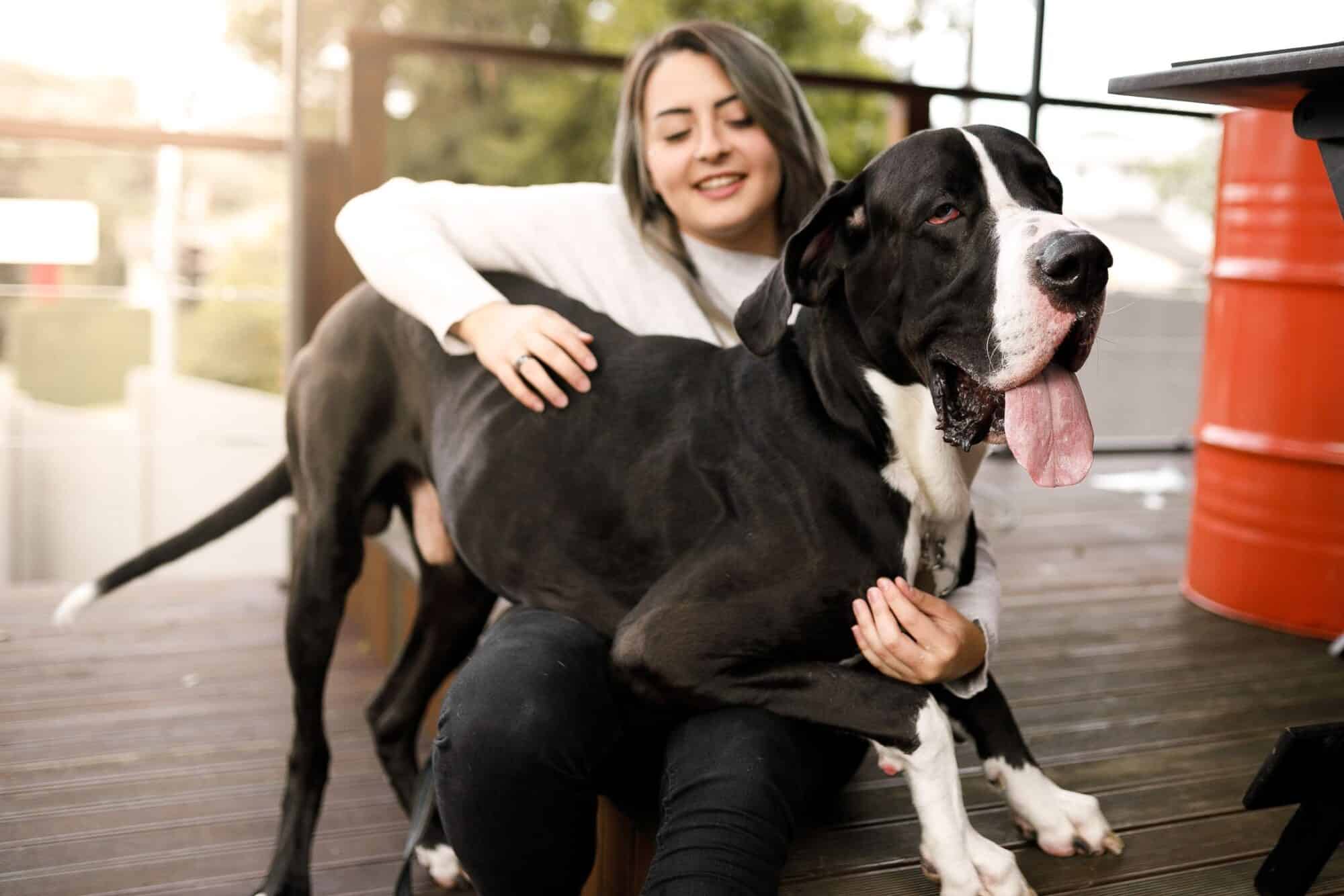Larger Than Life: How to Provide for a Big Dog

Every dog breed is unique in their own way, but it’s hard to compete with a big dog. Famous for having sweet, generous hearts and somewhat goofy personalities, big dogs remain some of the world’s most popular pets. While they’re certainly easy to get along with, large breeds have specialized needs that require close attention.
Which Woof
Generally speaking, large breeds weigh over 50 pounds and stand at least 24 inches tall. Many big dog breeds can weigh over 100 pounds, with some exceeding 200 pounds!
Some of the most well-known big dog breeds include:
- Mastiffs
- Saint Bernards
- Bloodhounds
- Afghan Hounds
- Rottweilers
- Komondors
- Siberian Huskies
- Old English Sheepdogs
- German Shepherds
- Irish Setters
- Pointers
- Weimaraners
- Poodles
They are typically smart, active and fully engaged in their environment, making big dog breeds highly desirable among dog owners.
A Strong Foundation
To support the needs of a big dog, it’s important to consider how much space they need at home. While apartment dwelling might not be ideal for many big dogs, it’s manageable if they get outside frequently. However, suburban or rural environments deliver open spaces preferred by large dog breeds.
Stretching Those Legs
If you have a yard for your big dog to call their own, be sure that the fencing and gates are secure. Big dogs don’t always realize their own strength and can easily damage or destroy barriers intended to keep them safely confined. Also, it’s worth noting that some big dogs enjoy jumping over fences, so be sure they cannot escape.
Keep Movin’
Big dogs benefit from training. Being able to follow basic commands is great petiquette, but can keep them safe from harm, as well. Holding onto a big dog’s leash can become more challenging as they grow, but with proper training, they will learn how to walk in-step with you.
Agility courses can also be super fun for a strong, big dog while teaching control and discipline.
Big Dog Nutritional Needs
Large breeds tend to grow quickly, and they love to eat. Depending on your dog’s age, weight, and lifestyle, they may need anywhere from 4-6 cups of dog food every day. Choosing a nutritious diet for a big dog is no easy feat, and we’re here to help find the right product(s) for your gentle giant.
Obesity can be a real concern for large dog breeds, and extra weight creates strain on joints. It can be a good idea to discourage your big dog from jumping off furniture, standing on hind legs, and working out on hard surfaces. To reduce the pain associated with arthritis or hip dysplasia, invest in a great orthopedic dog bed for them to relax on.
Bloat is a common problem in big dogs. The result of swallowing air when eating too quickly, bloat can be a life-threatening emergency. Be sure to know the symptoms of bloat and act quickly if you recognize any.
Other Concerns
New pet owners of big dogs must be prepared to handle the cleanup. More food equals more waste. Additionally, larger dogs tend to drool more than smaller breeds. It may take time to find the right place for the water bowl, but it’s necessary to keep floors free of the slippery mess.
Big Dogs Rock
Our staff looks forward to meeting your big dog. Until then, give us a call at (248) 646–5655 with any questions or concerns. We’re always here for you at Beverly Hills Veterinary Associates, Inc.
